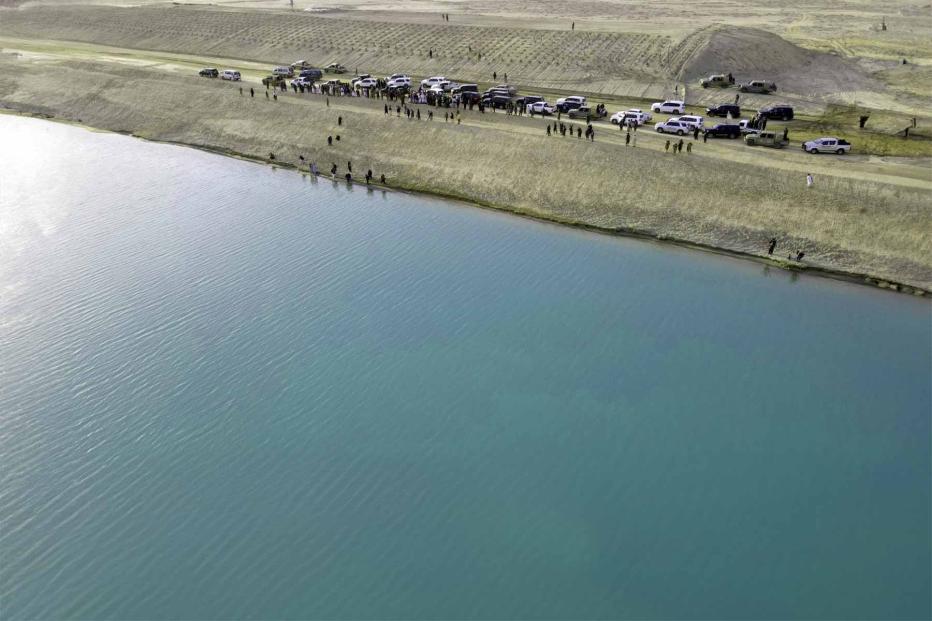An irrigation canal under construction in Afghanistan is aimed at transforming the agricultural landscape, providing water to millions of citizens suffering from regular droughts. After the completion, the Kushtepa Canal will stretch for 285 kilometers and will help irrigate the arid northern provinces of the country.
Neighboring Uzbekistan and Turkmenistan, however, are extremely concerned about the impact on their water supply system. The canal will direct resources from Amu Darya River and reduce supplies for the two countries that have used water from this source since Soviet times. Uzbekistan and Turkmenistan may lose up to 15 percent of the current watercourse after the completion of the waterway in 2028, writes Cabar.asia
The project, estimated at $684 million, was in development for several years before the Taliban seized power, at the same time preparatory studies and exploring the possibility began under the former government of Afghanistan with the support of the US Agency for International Development USAID.
“This is a development project for Afghanistan that should have been implemented many years ago. It is clear that the countries of Central Asia will suffer from this, but Afghanistan has the right to use the water of Amu Darya River for its development,” said Najibullah Sadid, an expert on water and the environment from the University of Stuttgart in Germany, noting that successive wars have hindered the project.
When the Taliban came to power in August 2021, it continued the work started by the previous government; by that time, seven kilometers of the canal had been built. Construction accelerated under their government, and satellite images show that approximately 100 kilometers of the canal were built between March 2022 and May 2023.
Water is a critical resource for Afghanistan, as the country is facing an unprecedented humanitarian crisis: according to the UN Food and Agriculture Organization (FAO), almost 17 million people, or 40 percent of the population, face serious food shortages. Despite the fact that 80 percent of the population depends on agriculture for food, and climate change profoundly affects yields, exacerbating the danger of food shortages.
Huge reserves of water resources lie untouched among the desert territories of Afghanistan. More than 80 percent of the country's waters originate in Hindu Kush Mountains, which ensure the continuous flow of large rivers throughout the year, as snow melts in summer.
However, the unsatisfactory water supply infrastructure presents huge challenges in ensuring uninterrupted access to water.
The quality of construction is a key concern. Satellite images indicate that the construction methods are elementary, without any real reinforcement or cladding for the bottom and banks of the canal.
This creates a risk of significant water losses due to seepage into dry sandy soil, which will exacerbate the already pressing problems of salinization and waterlogging of irrigated lands. Indeed, according to Sadid, recent events indicate erosion of some parts of the channel's diversion dam.
The lack of stable legal mechanisms regulating water use processes in the region, which affect water intake and river management, complicates the situation.
Afghanistan is not a party to the 1992 Convention on the Protection and Use of Transboundary Waters, which serves as the cornerstone of the management of transboundary rivers and lakes. It is also not part of the 1992 Almaty Agreement regulating the use of rivers, and the earlier 1946 agreement with the USSR is no longer valid.
There is certainly room for negotiations, since Afghanistan depends on its neighbors for other vital resources. For example, Uzbekistan provides Afghanistan with electricity, and Turkmenistan with gas.
Sadid noted that due to the rapid melting of glaciers in Pamir, the volume of water in the Amu Darya River will increase until 2050. However, this means that it will then begin to decrease, exacerbating the water disputes.
Improving irrigation systems in the wider region is of key importance.
“For example, Uzbekistan and other countries in the region should work on improving irrigation technologies and improving them,” Sadid continued. “If we don't modernize the irrigation system, there will undoubtedly be more conflicts and disputes over water in the region.”







